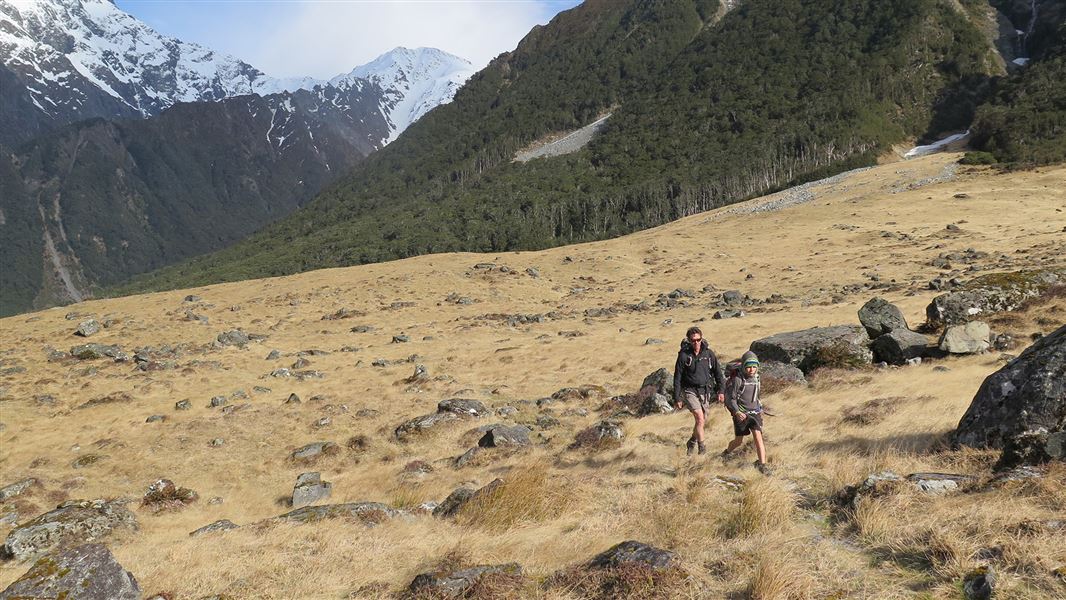
Located in Ruataniwha Conservation Park in the Canterbury region
Introduction
The Huxley valley branches off Hopkins valley in Ruataniwha Conservation Park.Stay safe in the outdoors
- Choose the right trip for you. Learn about the route and make sure you have the skills for it.
- Understand the weather. Check weather forecasts.
- Pack warm clothes and extra food. Check gear lists.
- Share your plans and take ways to get help. Share directly or use the Outdoor Intentions form or Plan My Walk. Take a distress beacon.
- Take care of yourself and each other.